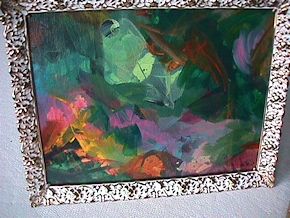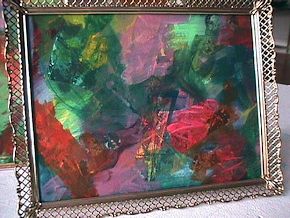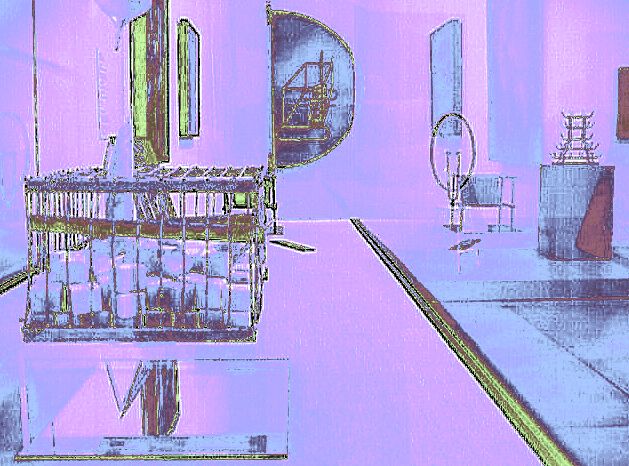2002.11.11 07:26
Re: Banker to offer art work for auction
All this has given me a great idea, that is, to make the IRS the heir of all my artworks when I dead.
2002.11.11 14:09
positioning Étant Donnés [wavelengths]
[from Jennifer Gough-Cooper's chronology (Ephemerides) within Marcel Duchamp: Work and Life (1993) with notes/questions by myself]:
6 May 1949. Philadelphia ...and Duchamp makes detailed notes on the architecture of the different rooms [of the Philadelphia Museum of Art where the Arensberg Collection ultimately ends up].
I wonder if these detailed notes still exist somewhere, and whether they might offer an indication that Duchamp in 1949 at least knew of the space in the PMA where Étant Donnés is ultimately housed.
20 March 1961. Philadelphia In the evening, with Katherine Kuh as moderator, Duchamp, the sculptor Louise Nevelson, and two painters, Larry Day and Theodoror Stamos, are members of a panel to discuss "Where do we go from Here?" at the Philadelphia Museum College of Art.
Of the panelists, Duchamp is the only one to make a prepared statement. [The 20 paragraph statement is published in full within the chronology and ends with, "The great artist of tomorrow will go underground."
Roger LaPelle, in Tout Fait's Notes issue 1, no. 3, writes of Duchamp's visit/lecture at the Pennsylvania Academy of Fine Arts in 1962 where Duchamp refers to himself as an "underground artist."
[I was in Philadelphia on 20 March 1961, but I was not listening to Duchamp downtown, rather, I was at home celebrating my 5th birthday (no kidding), and I distinctly remember thinking at the time, "where do I go from here? (just kidding)]
Has the above mentioned text been published anywhere else beside the Gough-Cooper chronology? It is a very provocative/prescient late Duchamp text.
31 March 1968. New York [the entry ends with] However, the question of the ultimate presentation of Etant donnes preoccupied Marcel. He finally decided that the one person who might help him solve this problem was Bill Copley. When Marcel first told him the story of the piece Bill could not wait to see it, and readily accepted to present the "demountable approximation" in the name of the Cassandra Foundation to the Philadelphia Museum of Art, if the trustees would accept it.
What I am interested in is whether Duchamp's involvement in the installation of the Arensberg Collection (roughly 1949 to 1954) at the Philadelphia Museum of Art has any direct bearing on the on-going creation and ultimate position/presentation of Étant Donnés. I'll pursue all this (I hope) at the PMA library, but if there is already a published study of Duchamp's role vis-à-vis the PMA installation of the Arensberg collection I would much appreciate being made aware of it.
2002.11.11 20:20
Re: Bear Necessities: The Art of Rachel Harrison
What I find inspiring about Rachel Harrison's art work (at least what is pictured in Artforum November 2002) is that I can now look at my entire house as a museum containing/exhibiting numerous paintings, sculptures, photographs and installations.
[joke]
What comes after house/palace?
Museum.
What comes after museum?
Pre-shrine.
| |

Critics Abuzz 01 2002.11.12
2002.11.12 16:01
Re: Banker to offer art works for auction
The issue boils down to control and how much an artist wants to control their art beyond the making of it.
McElroy is right about the overall flexibility of contracts, and it does bode the artist well to be cognizant of the (somewhat easy) legal capability of 'designing' control.
My personal inclination is that I do not want to control my art beyond my making of it (especially since some of my 'best' work operates under the notion of 'apposing' someone else's work).
It seems only fair to respect artists that want to exercise more control, however.
Perhaps it might even be worthwhile for art history to from now on record contemporary art and the controls (if any) that it comes with.
[future question]
"Was she a control artist or was she a no-control artist?"
2002.11.13 22:01
Re: Matthew Barney
I've probably already lost out just by viewing 4 & 5 on my TV while laying on the couch, rather than seeing the work on a large screen with an audience. [It just occurred to me that seeing anything in the privacy of one's home very much lessens the "obligation" of sitting though an entire performance, while also lessening the occasion to "zone out" because one can either just get up and do something else or just change the channel.] The series played at the Philadelphia Museum of Art a while back, but I found out about it after the fact—I would have gone to the "viewing" if I had known about it. Mind you, I would have been very tempted to yell out "Give me a break!" and "Oh my gosh, isn't this is the most amazing thing you've ever seen!" more than a few times.
Seeing what I saw so far, however, and even under less than favorable circumstances, I'm still disappointed relative to all the hype.
| |

Critics Abuzz 02 2002.11.15

Critics Abuzz 03 2002.11.15
| |

Critics Abuzz 04 2002.11.15
2002.11.15
image play

|